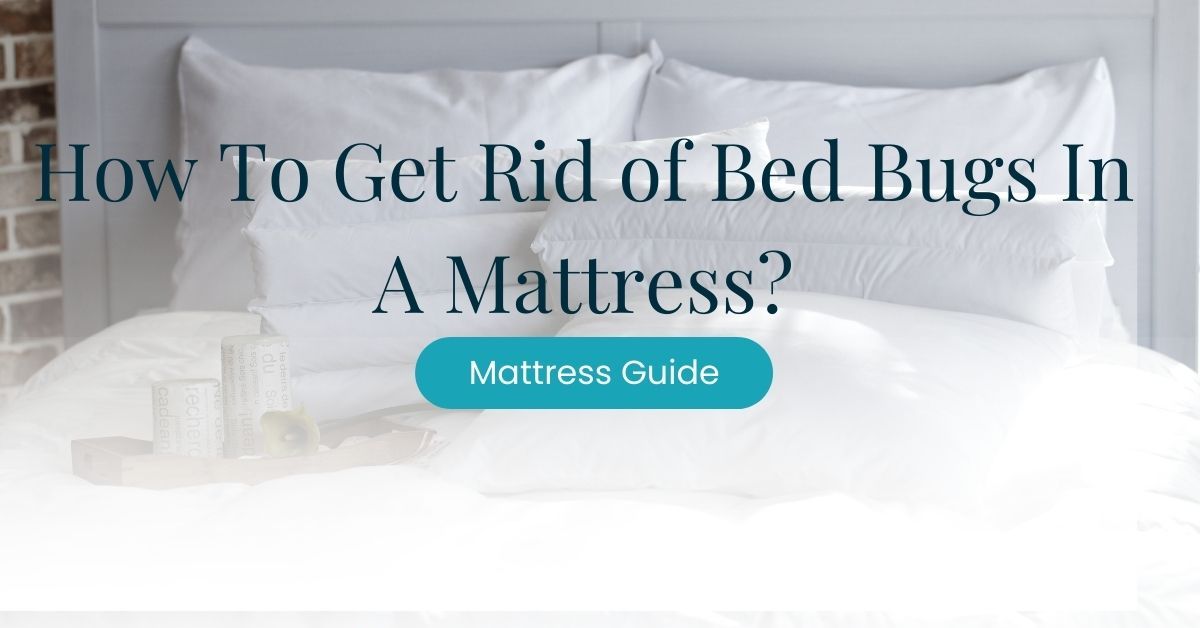Have you woken up with red bites on the exposed parts of your body? Are they itching like crazy right now? It may be bed bugs, and now you’re itching to know how to get rid of bed bugs.
A recent survey by National Pest Management Association (NPMA) found that almost all or 97% of pest professionals treated bed bugs in 2017.
And in 2015, a University of Kentucky survey of pest management professionals found that 68% of professionals thought bed bugs were the hardest to exterminate or deal with.
Unfortunately, not everyone can afford to call a pest professional.
If this is your case and you’re trying to solve the problem yourself first, we’ve got your back. In this blog, we will understand what bed bugs are, their behaviour, how to spot a bed bug infestation, and how to get rid of them.
How to Temporarily Get Rid of Bed Bugs?
A clean mattress is great, but bed bugs can only be killed through the following methods:
- Pesticides used by professional pest control
- Extreme hot and cold temperatures
We will base our bed bug-eliminating methods on the factors above.
Disclaimer: This method is only a temporary solution. While the methods we’ll share can remove adult bed bugs or clean bed bug casings, this will not ensure the complete removal of bed bugs.
Method 1: Vacuum Cleaning
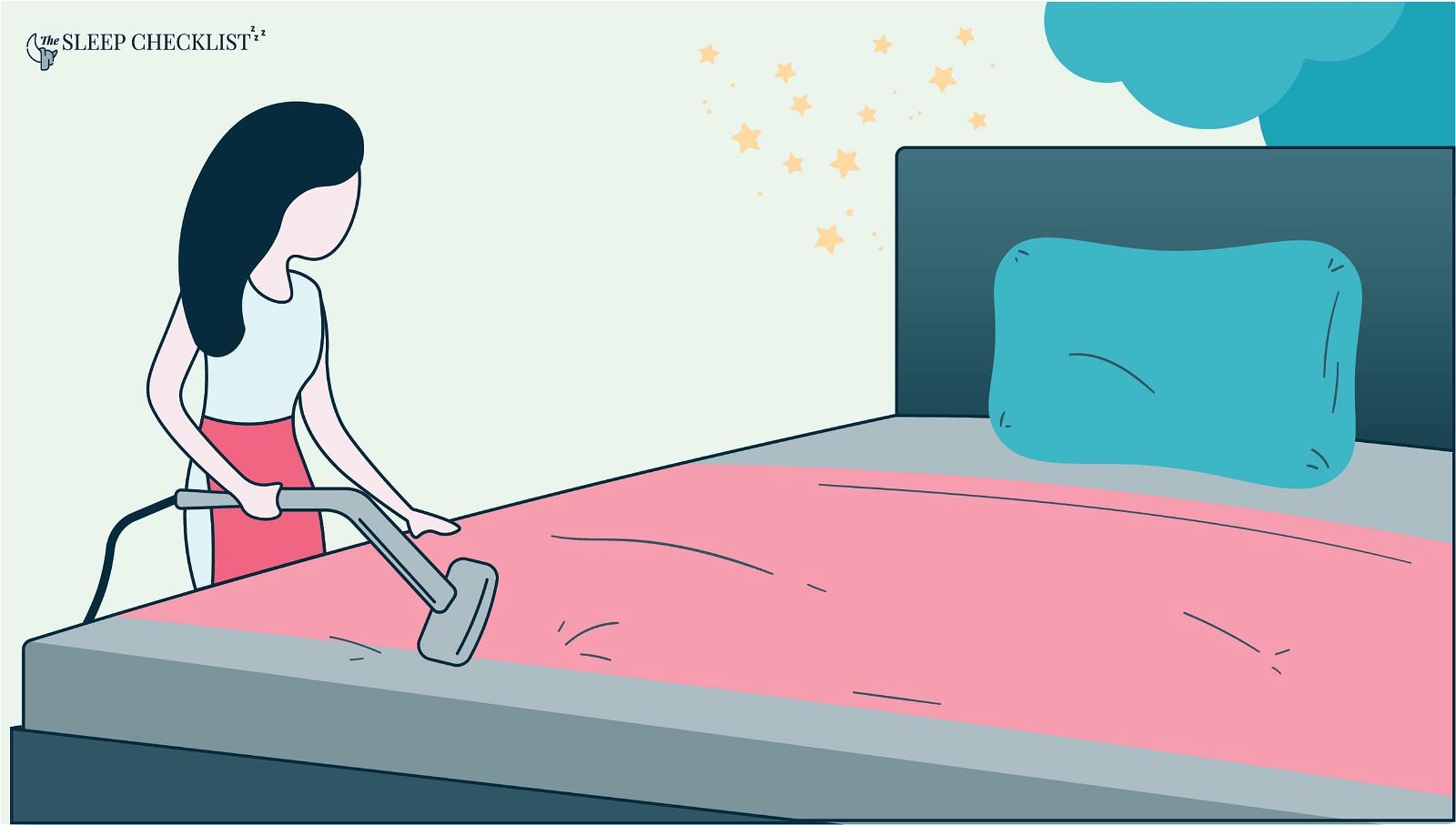
As mentioned earlier, bed bug eggs can be hard to remove because it is glued to surfaces where they are laid. While you can vacuum possible bed bugs infestation sites, this can only possibly remove
- Nymph bed bugs
- Adult bed bugs
- Loose eggs
- Shell casings of bed bugs
- Faeces or droppings of bed bugs
Once you’ve identified signs of bed bug infestation and know where to find bed bugs, you can proceed with vacuuming the area. To start, vacuum all surfaces of the beddings, including:
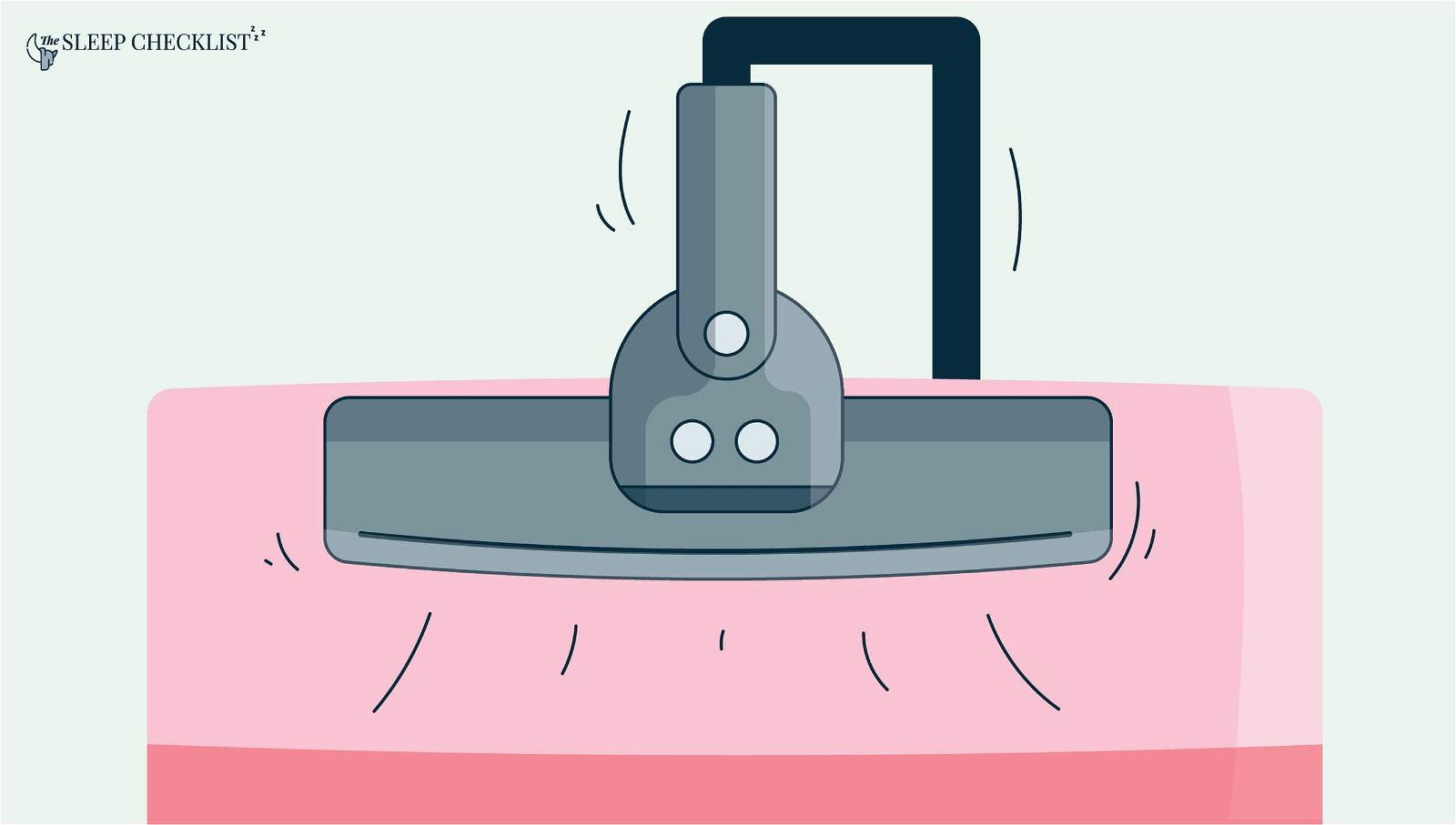
- Sheets
- Pillows
- Pillowcases
- Mattress cover
- Mattress
Contain all the items that cannot be washed in a sealed plastic bag and wait for a professional exterminator to deal with them.
For items that can be washed at a high temperature, proceed with the second method.
Thoroughly clean the vacuum dirtbag to ensure none of the bed bugs can re-infest your home. You can try burning the contents of the dirtbag since extreme heat can kill bed bugs.
Method 2: Extreme Temperature
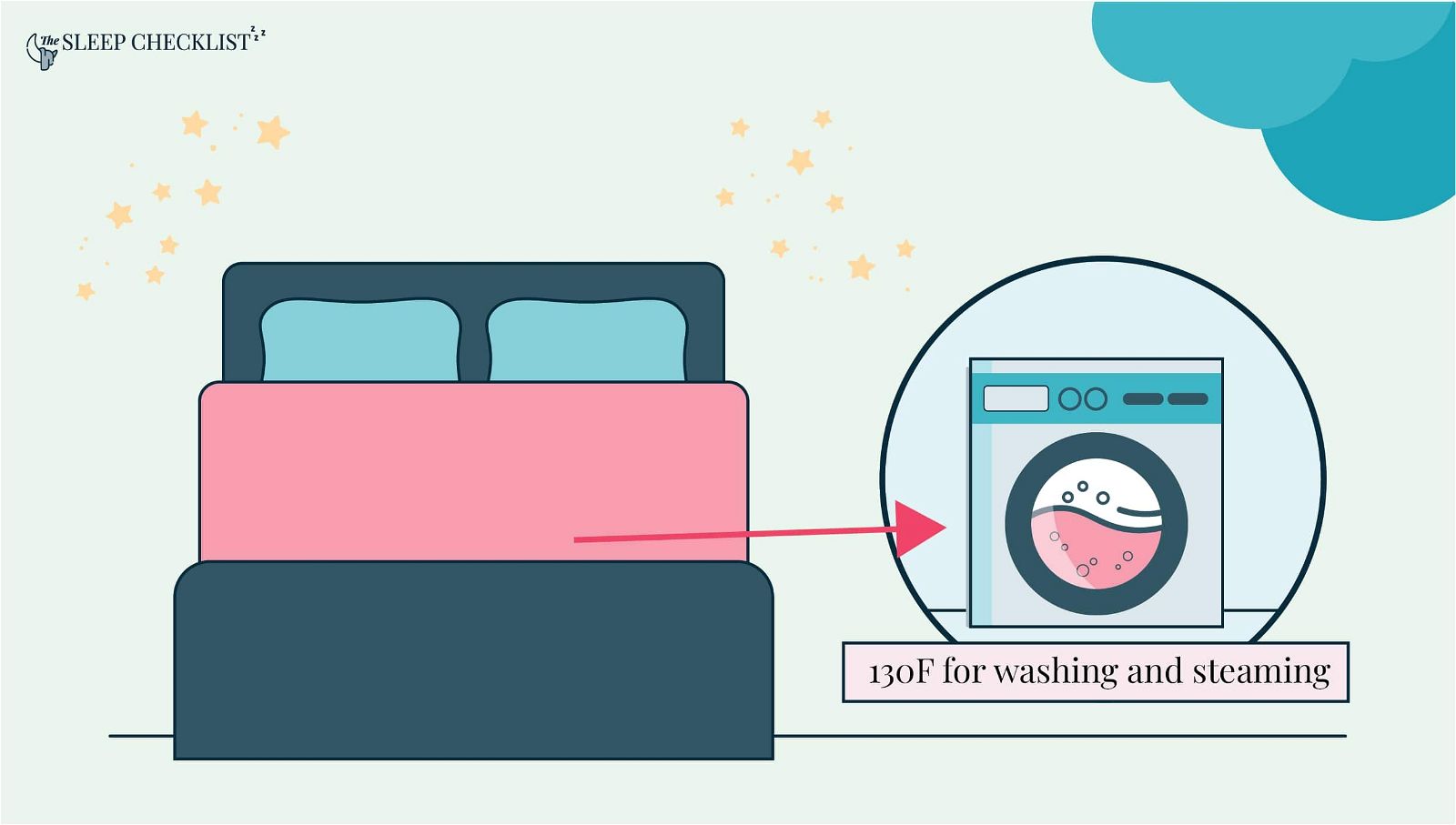
According to EPA, extreme cold of at least 0℉ and extreme heat of at least 130℉ can kill bed bugs. Considering this, you can try the following:
- Washing the clothes, beddings, and other infested items can be washed in a high heat washer with at least 130℉ temperature. Wash for at least 2 hours to ensure the killing of bed bugs.
- Freeze the contained items at a temperature of at least 0℉ cold for four days.
- Use a steam cleaner with at least 130℉ temperature. If possible, use the steam cleaner for at least 2 hours to ensure the killing of bed bugs.
Using extreme temperatures is scientifically effective, but it is not practical for household items since
- Not all household items can be washed or frozen to the required temperature.
- Using a steam cleaner on delicate materials such as the mattress can damage them. You may get rid of bed bugs, but the item will not be in its best shape.
- Steam cleaning is impractical for large items since bed bugs can quickly disperse.
Hence, we still recommend contacting professional pest control companies that can do your job efficiently and effectively.
Why Can’t You Completely Remove Bed Bugs Using Home Remedies?
Now, let’s talk about the reasons why you’ll need professional help and why home remedies can be ineffective:
- Fast multiplication rate of bed bugs.
I will lay the facts here:
- A female bed bug can produce an average of 5 eggs per day for about 10 days after a single blood meal.
- A bed bug can survive up to 400 days even without feeding.
I’ve done the math for you:
Even if we eliminate a single bed bug ourselves, the eggs laid behind will keep up with the growing rate of bed bugs. Due to the number of eggs a female can produce, a bed bug population can double every 16 days.
And now we go to the second point, eliminating the eggs.
1. Bed Bug Eggs Are Hard To Remove
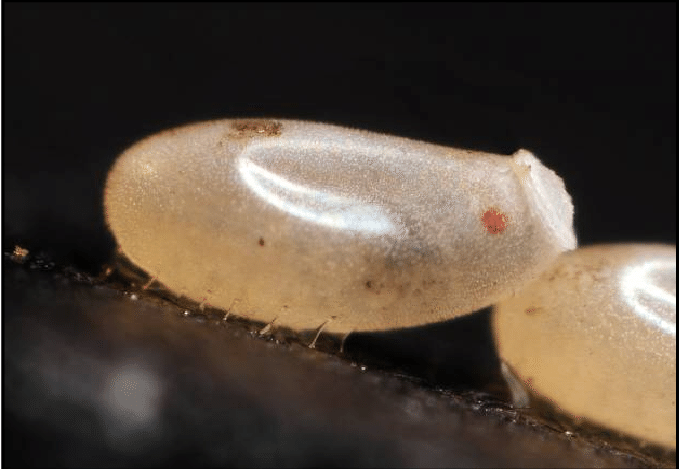
As you can see, bed bugs’ eggs are glued down when laid. This means that they can resist movement if removed by vacuuming.
And considering how fast bed bugs can multiply and how long bed bugs can survive without food, any remaining eggs can cause another infestation.
2. Bed bugs can only be killed fast by using chemicals.
Even CDC suggests contacting a professional pest control company once you confirm an infestation of bed bugs. As we know, bed bugs can live up to 400 days without a food source.
While we can contain them, sealing your bed in plastic, for example, sometimes we don’t have the luxury to spare one bed or furniture for a year to let beg bugs die off.
Can baking soda kill bed bugs instantly?
Baking soda cannot kill bed bugs instantly. It may help to remove some but the only way eliminate bed bugs instantly is to use a pest management professional.
How Long Do Bed Bugs Live On Mattresses?
Bed bugs can live on your mattress for up to 12 months
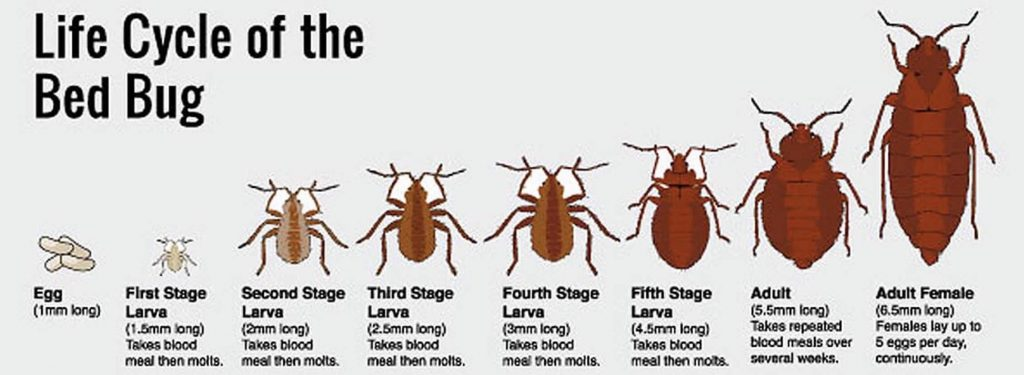
Bed bugs are parasitic insects that only feed on the blood of humans and animals. They’re wingless, reddish-brown in colour, and range from 1mm to 7mm or about the size of an apple seed.
Let’s look at a bed bug’s life cycle so we’ll know how long it can live on your mattresses.
Stage 1 – Egg
Eggs of bed bugs are only about 1 mm in size. At this stage, bed bugs are harmless to humans. These eggs hatch in 4 to 12 days and become a first stage nymph.
Stage 2 to Stage 6 – Nymph
Bed bugs have five stages as a nymph. Interestingly, each stage requires a blood meal before the bed bug moults into the next stage.
So, imagine living with only 1 bed bug on your mattress. It will feed or bite on you five times at its nymph stage!
Each of the five stages lasts for about a week, longer if the nymph can’t find a live host to feed on. The nymph stage of a bed bug lasts for more than a month.
Stage 7 – Adult
The fifth stage nymph moults into the adult stage bed bug.
At this stage, bed bugs can reproduce and lay eggs. Female bed bugs lay approximately five eggs daily and about 200 to 250 eggs throughout their adult lives. Like the nymph stage, an adult bed bug feeds on human or animal blood. That’s another important to clean your mattress of blood.
The adult stage of a bed bug lasts between 6 to 12 months. They can even live up to 400 days without feeding!
This is why bed bugs are considered the most difficult pest to control.
Do bed bugs ever just go away on the mattress?
If you’ve dealt with getting rid of lice on your mattress before, you’ll know that head lice won’t last two days if they don’t feed on blood. But as mentioned previously, bed bugs are more resilient. They can survive up to 400 days on your mattress without feeding.
Considering a female bed bug can lay up to 250 eggs, numbers multiply rapidly.
So, unfortunately, bed bugs don’t always go away on your mattress immediately. When not controlled, bed bugs can infest your bed for years.
Signs of Bed Bug Infestation
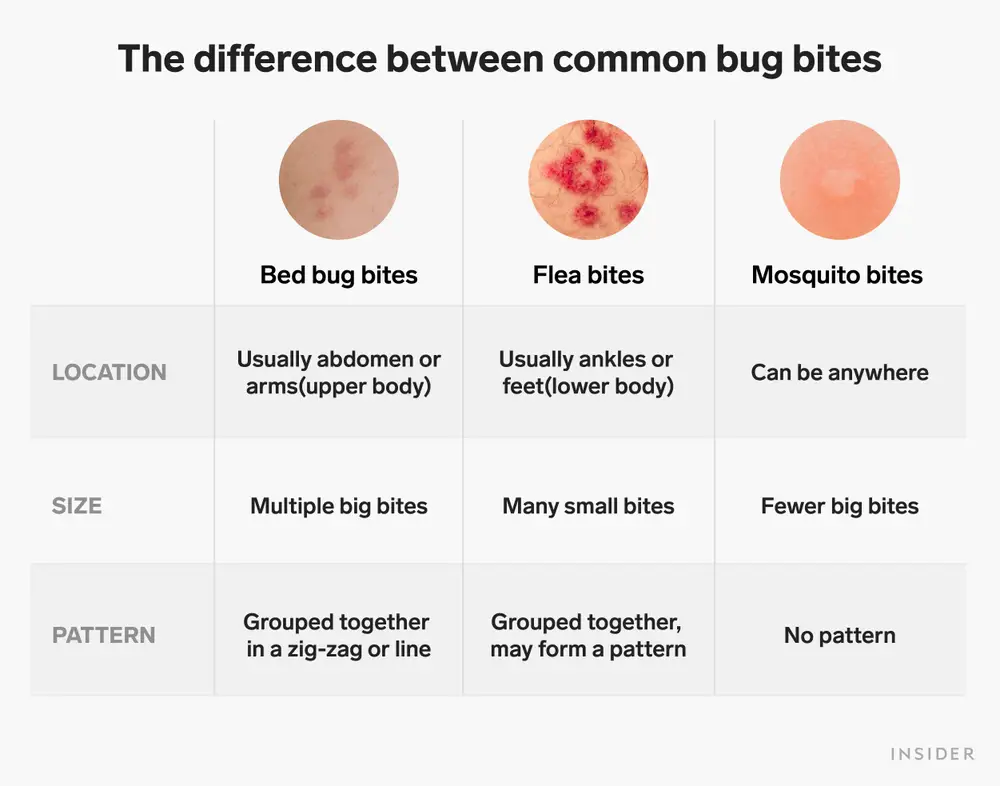
To remove bed bugs, you first need to know if it is bed bugs you’re dealing with. Bed bugs are easily confused with other pests. According to a National Pest Management Association survey, 84% of pest control professionals were initially contacted about a different type of pest before identifying them as bed bugs.
The majority of these contacts were initially identified as fleas. This is because bed bug bites are similar to flea bites.
To easily identify bed bug infestation, we can look into these signs:
1. Bed Bug Bites
According to CDC, bed bugs aren’t known to spread disease, but bed bug bites can be uncomfortable. Constant itching can increase the risk of skin infection because of excessive scratching. This will also result in sleepless nights if left untreated.
Bed bug bites are described as grouped bites that form a line. They are usually found on exposed skin during sleep, unlike flea bites that can usually be found on the feet or lower parts of the body. Also, unlike flea bites, bed bug bites do not have a red spot in the centre.
2. Bed Bug Odour
People who experienced bed bug infestation first-hand described bed bug odour as musty and sweet. If this is something you can smell in your bedroom, it may signify a bed bug infestation.
3. Bed Bug Shell Casings
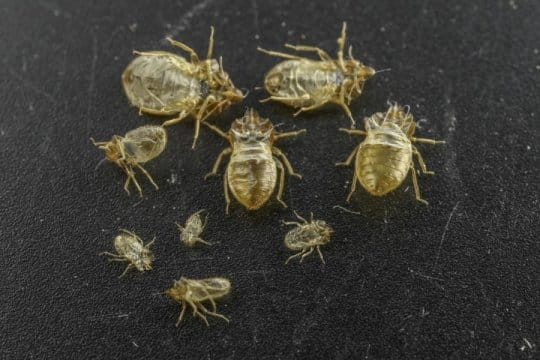
As bed bugs go through the five phases of their nymph stage, they shed skin as they moult into the next stage. Shell casings are translucent and hollow outlines of nymph stage bed bugs.
They are often easier to spot than the bed bugs themselves. They can be discovered in places where bed bugs hatch and breed, such as:
- mattress seams
- upholstered furniture
- holes
- fractures
- crevices in wooden furniture
4. Bed Bug eggs
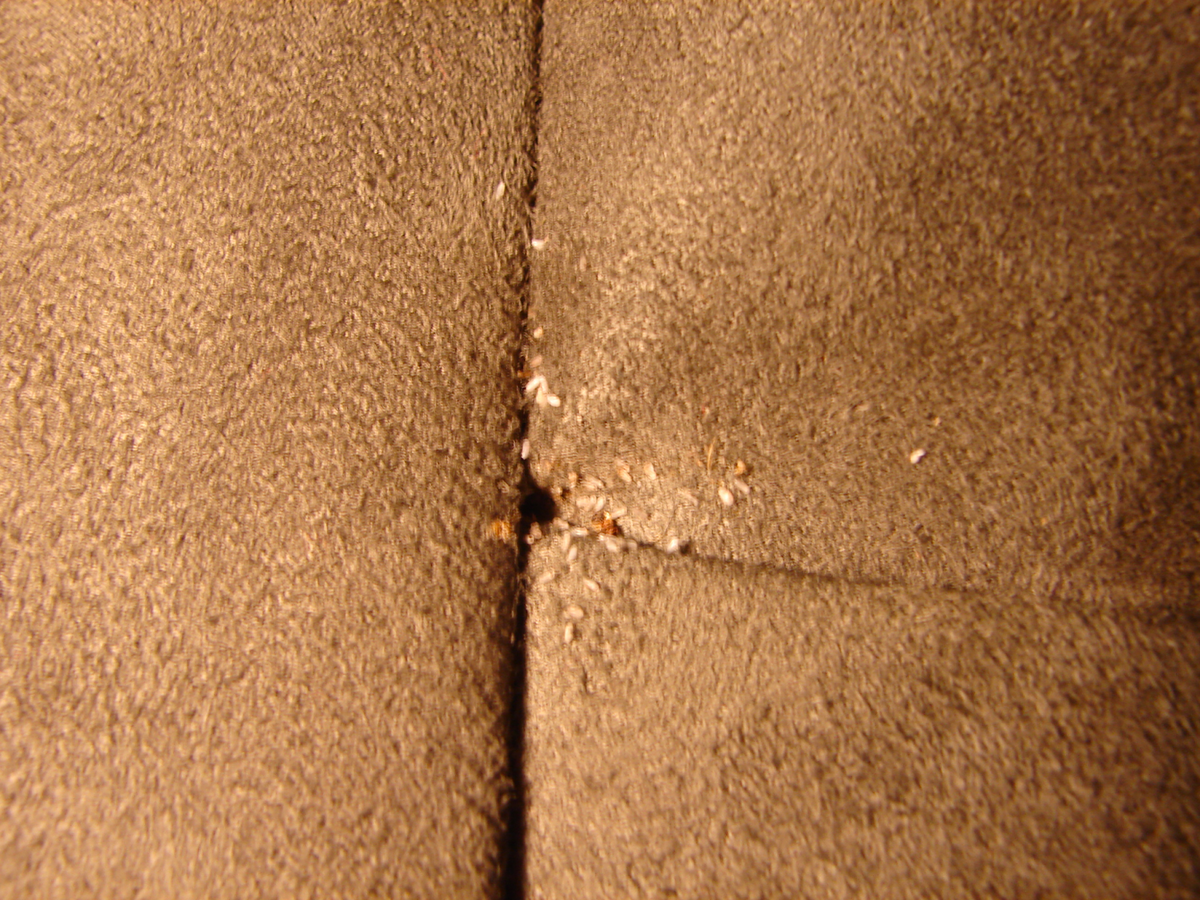
Like the list above, where you can find casings of bed bugs, you might spot bed bug eggs.
Bed bug eggs are visible to the naked eye. They are around 1 millimetre long, pearly white in colour, and ovular in shape. They are shaped like tiny grains of rice but the size of a sesame seed.
Bed Bug Stains On Bedding Upholstery
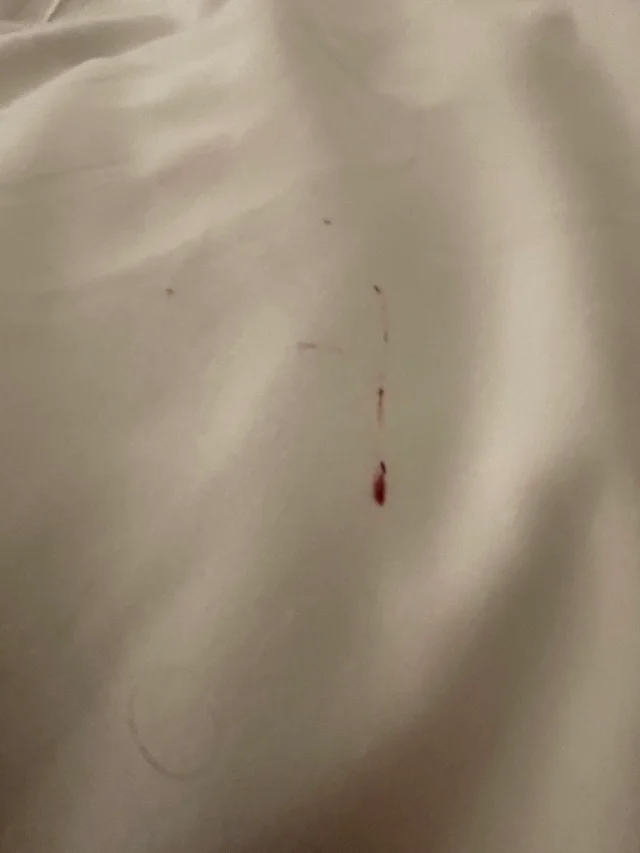
First-hand experienced people share that bed bugs stains or blood from being crushed looks red or rust-coloured.
These stains can sometimes be caused by bed bug bites as well. Bed bug saliva contains an anticoagulant, preventing blood clots while they feed. As a result, the bitten areas may continue to bleed for a short time after they finish feeding.
Faecal Marks of Bed Bugs
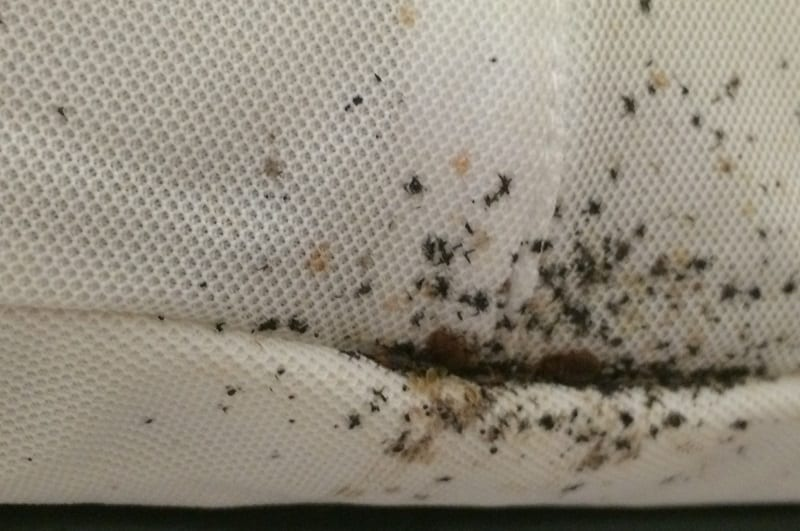
Compared to the bloodstains described above, bed bug faecal marks or faecal spotting are much more minor and darker, resembling an ink dot from the tip of a pen or marker.
Bed bugs feed on blood, so the droppings give off a faint rusty smell, similar to an old bloodstain.
Bed bug faecal spotting can usually be found in large numbers around bed bug hiding places.
7. Live Bed Bugs
We’ve described what a bed bug looks like. But they are hard to find, especially during the day. Bed bugs love to attack when the hosts are sleeping.
To make bed bugs come out of hiding, you can
- Wait for them to come out at night.
- Since warmth indicates a warm-bodied host and bed bugs are attracted to this, you can simulate warmth by using a hairdryer on the mattress. This will not kill the bed bug but will help you confirm that you have a bed bug infestation.
What Attracts Bed Bugs to Your Home and Your Mattress?
Bed bugs may infest your home undetected through clothing, couches, and other items from outside. They can easily transfer to your mattress when you get bed bugs from outside and sit on your mattress. They can come from other infested areas or through second-hand furniture. Bed bugs are almost everywhere.
But what factors may attract a bed bug to you? Here, we listed factors that attract a bed bug:
Bed bugs are attracted to carbon dioxide.
As with any living creature, bed bugs are attracted to food sources, which means warm blood from a host. Carbon dioxide, present in the breath of a prospective food source, attracts bed bugs.
A person breathes out an average of 500 litres of carbon dioxide daily. Considering we sleep a third of our day, that’s about 200 litres of carbon dioxide during sleep in a single area.
This is why bed bugs attack humans at night during sleep. Carbon dioxide released signals that a suitable live host is nearby.
Bed bugs are attracted to warmth.
Similarly, bed bugs understand that a heat source indicates the presence of a warm-bodied host. When we sleep, we produce warmth by coming in contact with blankets and mattresses. This signals bed bugs to come out during our sleep.
This is also similar to fleas, and here you can learn about removing fleas from your mattress.
Bed bugs are attracted to dirty laundry.
Bed bugs are attracted to dirty laundry since it smells like a potential host. Keep items off the floor to prevent bed bugs lurking from getting to your clothes and then to your mattress.
Bed bugs are attracted to dark bed sheets or fabrics.
Bed bugs are attracted to dark fabrics as a survival strategy. Because bed bugs are reddish-brown in colour, they hide or camouflage in dark coloured fabrics.
Where Do Bed Bugs Hide?
We might think that bed bugs are just found on the bed because of their name. But research from the National Pest Management Association stated that although bed bugs are typically found in couches and bed frames, bed bugs can also be found in the most unexpected places, including
- stuffed animals
- wheelchairs
- aeroplanes
- school buses
- purses
- bedside lamps
If bed bugs can infest those bizarre places, common areas in your house are also prone to infestation. These include
- mattress
- pillows
- beddings
- walls near your bed
- closet and clothing
- curtains and carpets
- other furniture where you spend time
Can bed bugs live in your hair?
With the endless possibilities of places where bed bugs can hide, you may think that bed bugs can live in your hair like head lice. But unlike head lice, bed bugs’ legs and bodies aren’t built for crawling on hair.
- Bed bugs are about the size of an apple seed, while adult head lice are about the size of a sesame seed.
- Head lice have claws on all of their feet while bed bugs don’t.
So even if bed bugs might have bitten you on your head or neck, they aren’t likely to stay in your hair afterwards.
If you do constantly feel itchy and feel like something’s moving in your hair, it might be possible that you have head lice. You may check our guide on getting rid of lice in mattresses to know more about head lice.
How to Remove Bed Bugs Permanently?
If your mind is still wondering what kills bed bugs instantly? Or what chemical kills bed bugs? Let’s leave that to professional pest control. We will not share home remedies or DIY procedures that are not effective.
- You might try to remove bed bugs using rubbing alcohol, but that won’t even kill a single bed bug.
- You might try to exterminate bed bugs using baking soda, but that won’t kill bed bugs.
- You might try to vacuum your furniture, but that won’t get the bed bug eggs. This might even spread the bed bugs throughout your home when vacuuming.
It is not wise to spend money, time, and effort on other DIY methods that do not work before you eventually hire a bed bug exterminator.
Hiring an expert pest control professional for bedbug treatment is the safest and most effective option. You may check with The British Pest Control Association for lists of professional pest controls near you.
What Happens if Bed Bugs Go Untreated?
As a takeaway, leaving bed bugs untreated can worsen the problem as these kinds of infestations do not die out on their own. T
he possibilities of places where bed bugs can hide are endless. And with a single bed bug laying up to 250 eggs in its lifetime, an untreated infestation can snowball.
And while a bed bug bite cannot impose a serious health risk, bed bugs infestation can take a significant mental toll on people living in infested homes, including anxiety, stress, and insomnia.
9 Sources
- https://www.pestworld.org/news-hub/press-releases/pest-control-professionals-see-summer-spike-in-bed-bug-calls/
- https://www.pestworld.org/news-hub/pest-articles/2015-bugs-without-borders-executive-summary/
- Kells, Stephen & Goblirsch, Michael. (2011). Temperature and Time Requirements for Controlling Bed Bugs (Cimex lectularius) under Commercial Heat Treatment Conditions. Insects. 2. 10.3390/insects2030412.
https://www.researchgate.net/publication/267547177_Temperature_and_Time_Requirements_for_Controlling_Bed_Bugs_Cimex_lectularius_under_Commercial_Heat_Treatment_Conditions - https://www.epa.gov/bedbugs/do-it-yourself-bed-bug-control
- Bed Bug Population And Behavior
https://www.vdacs.virginia.gov/pdf/bb-biology1.pdf - Statewide Integrated Pest Management Program
http://ipm.ucanr.edu/PMG/PESTNOTES/pn7454.html - https://extension.umn.edu/biting-insects/bed-bugs
- National Pest Management Association
https://www.pestworld.org/news-hub/press-releases/pest-control-professionals-see-summer-spike-in-bed-bug-calls/ - British Pest Control Association
https://bpca.org.uk/


